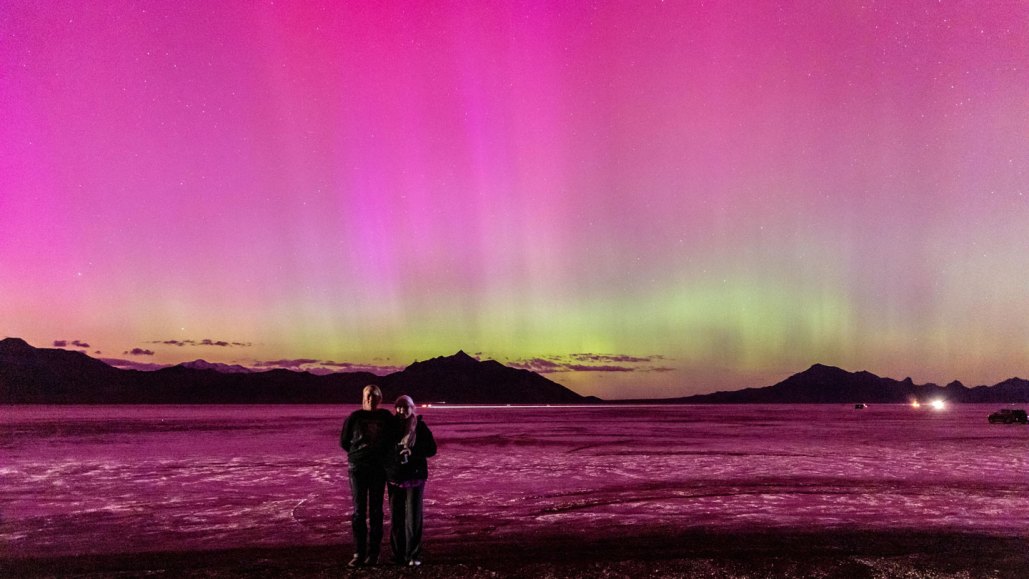Get ready for increased auroras as the sun reaches solar maximum

In May, we saw numerous pink and green light curtains swirling in the night skies all over the world, marking one of the most impressive aurora displays in 500 years.
All this light show came from the sun. In the first week of May, a flurry of solar flares and coronal mass ejections shot billions of tons of materials from the sun into space. This event created the biggest solar storm we’ve seen in over 20 years and resulted in auroras reaching as far south as Florida and parts of northern India.
This extraordinary spectacle indicates the beginning of what could be a long period of similar light shows. Such a thing happens because the sun is approaching the peak of its 11-year solar cycle and it’s already exhibiting more activity than initially expected.
Auroras occur when particles charged by the sun come into contact with our planet’s upper atmosphere’s oxygen and nitrogen molecules. When they rid of the energy gained during these collisions, they emit light in different colors. Since Earth's magnetic field directs these particles towards the poles, auroras are mostly visible only in the high latitudes unless the storms are significantly powerful.
To understand the expectations for the next few years and how this high solar activity affects us, Science News had conversations with Teresa Nieves-Chinchilla, the current director of NASA’s Moon to Mars Space Weather Analysis Office, and Shawn Dahl from NOAA’s Space Weather Prediction Center. These conservations have been edited for brevity and clarity.
The excitement in early May was due to the sun nearing the apex of solar cycle 25. As a result, we are seeing more activity from the sun, particularly in those days in May.
This activity we saw came from three categories of space weather: solar flares, radiation storms, and geomagnetic storms. The geomagnetic storms were what the world saw between May 10th and the 11th, and the 2003 storm that caused power outages in South Africa and Sweden can be compared to these historical storms.
Active regions, spots on the sun's surface, caused much of these storms. These areas have strong magnetic fields and form inside the sun before coming to the surface. These regions have cooler temperatures and appear darker than the rest of the sun. In these areas, there are many sunspots that accumulate vast amounts of magnetic energy, which eventually needs to be released.
The May 10-11 storm greatly impacted us on Earth. Satellite communications were disrupted because the storm messed up the ionosphere, the part of the Earth’s atmosphere these communications go through. The storm also caused a significant error in GPS, forcing operations that rely on the technology, such as farmers trying to plant crops, to halt. Aviation had to modify their flight routes to avoid the interruption of communications. Astronauts on the space station were also advised to keep away from less shielded areas of the station. Though the power grid experienced immense effects from the surge of induced currents caused by the storm, there were assigned measures to prevent a total system failure.
To prepare for solar storms like these, agencies conduct exercises to evaluate their preparedness for such an event. For instance, just two days before the recent solar storm, there was an exercise. NOAA and FEMA, for example, communicate to notify specific people to be ready for such occurrences.
Dahl: There’s been a lot of work done over the last decade to learn more about space weather. All the technological providers that we use in society today are well aware of space weather and they incorporate it into their planning and thinking. This was the most successfully mitigated extreme space weather storm in history for that reason. That’s why we’re not hearing about a lot of confirmed impacts to our technologies.
SN: Solar cycle 25 was predicted to be relatively weak, right?
Dahl: The international panel of scientific experts that make these long-range solar cycle predictions — this was pre-2019 — they predicted a lightweight solar cycle very similar to the previous one, which was not all that active. We are well outside that original margin of error with that forecast. We expect solar max at this point to be much more active than originally anticipated. So, all of this year, all of 2025, and even into 2026 we anticipate to be at the highest risk for another such event.
SN: Those regions on the sun that caused the May storm are about to face Earth again. Can we expect similar events soon?
Nieves-Chinchilla: We don’t know yet. But I can tell you that there are several X-ray flares coming from this region.
Dahl: Perhaps we’ll see some more activity, but it certainly will not be anywhere close to what happened on May 10th or 11th. People should always go to our webpage to find out the real story of what’s factually going on and what we’re predicting.




